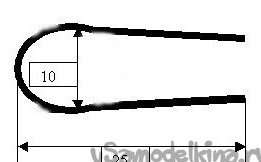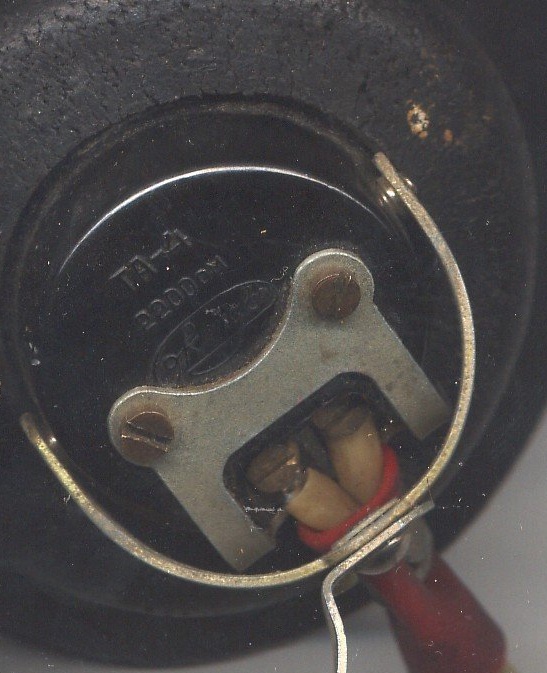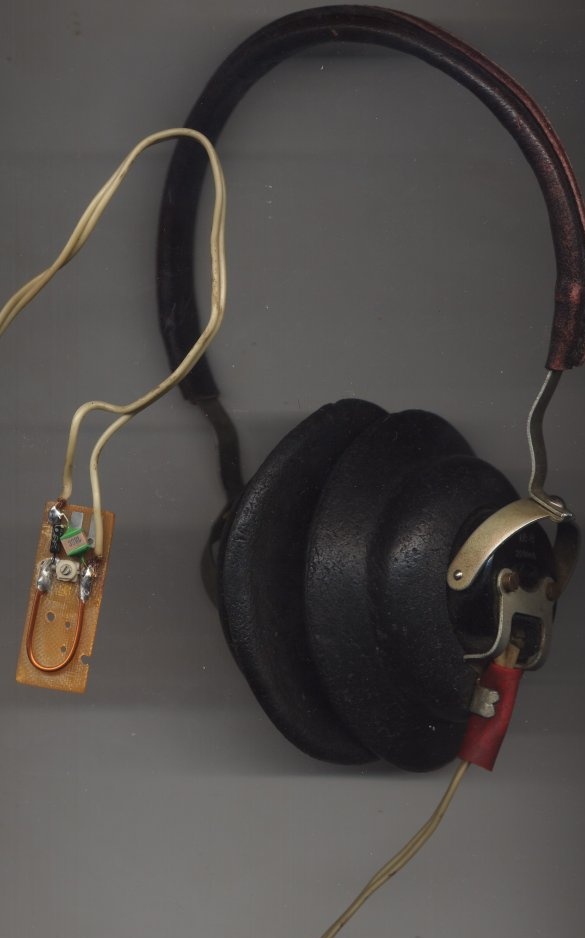I want to talk about my homemade. I deal with radio alarm systems, radio control, data transmission and radio communications. For the repair and verification of transmitters of radio signaling, telemetry and radio communications of the 433 MHz range, this device was manufactured.
The 433 MHz band is a dedicated band that does not require a license (subject to certain hardware requirements).
The device is a detector receiver tuned to a range of 433 MHz.
Consider a circuit diagram. It is very simple and does not require a power source.

The oscillation circuit consists of a coil L1 and a trim capacitor C1. The circuit is tuned to a frequency of 433 MHz. The coil simultaneously acts as a receiving antenna.
The circuit is quite broadband, so it takes all the channels in this range.
The signal induced in the circuit is rectified by a high-frequency germanium diode VD1, filtered by a capacitor C2 and fed to a high-impedance BF1 earphone or voltmeter, oscilloscope.
The use of a germanium diode is due to its ability to detect weaker amplitude signals than a silicon diode can.
The demodulated signal is reproduced by the headphone, based on this and the readings of the voltmeter and the oscilloscope, it is possible to determine the operability of the tested transmitter. Namely, to understand whether it radiates or not. Is there carrier modulation (only amplitude and pulse are determined).
In the process, the prefix is brought to the transmitter and the command transmission button is pressed on it. At a radio station, a button or a tangent. Or the transmitter is brought to the console. The distance between them should be 5 - 10 cm.
It should be borne in mind that transmitters can have different types of modulation. If it is amplitude (AM) or pulsed (IM), the signal can be heard in the headphone and seen on the oscilloscope screen. If the modulation is frequency (FM), phase (FM) or just an unmodulated carrier, then the headphone will not play a signal. It will be possible to determine the presence of a signal at frequencies of the 433 MHz range by connecting a DC voltmeter or an oscilloscope in the open-input mode to the console output (it shows the constant component).
The device is mounted on a board made of foil fiberglass. On the board are cut platforms to which the parts are soldered.
The coil is made of enameled or silver-plated copper wire with a diameter of 1-2 mm. Its shape and dimensions in millimeters are shown in the figure.

The diode VD1 can be replaced by GD507A, 1D508A, GD508A.
Trimmer capacitor - any small-sized. When mounting it on a board, it is advisable to solder the output connected to the rotor to the lower wire according to the scheme (minus).
Capacitor C2 - ceramic.
As an earphone, you can use high-impedance brands TA, TON with a winding resistance of 1000 - 2200 Ohms. When assembling, it is desirable to observe the polarity of the headphone connection. She is indicated on his body.

When assembling the structure, all conclusions of the parts on the board are made short. The earphone connects to the board with any stranded wire.
It is necessary to provide a convenient headphone mount on the head so that both hands are free. The author applied ready-made headphones using one of the nicknames.
Customization. A well-known transmitter of the 433 MHz range, for example, a car alarm keychain, is brought to the prefix. Press the button on it and hold. Using a dielectric screwdriver, adjust the tuning capacitor C1 to the maximum sound signal in the headphones.
Or they take a high-frequency generator, Connect an antenna to it in the form of a length of wire 10-15 cm long. Adjust the generator to a frequency of 433 MHz and an output voltage of 2-5 V. The attenuator is put into position without attenuation of the signal. On the generator, the amplitude (AM) or pulsed (IM) modulation is switched on with a modulation of an audio frequency of 1 - 2 kHz and the capacitor C1 of the set-top box is adjusted to the maximum sound in the earphone or the readings of a voltmeter, oscilloscope.
A customized circuit board can be placed in a non-metallic case.
I hope this article will be useful to you.
Sincerely, author.


